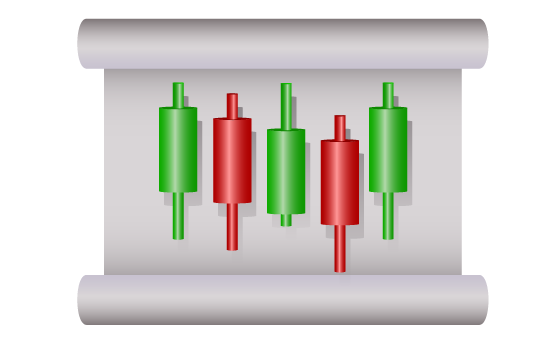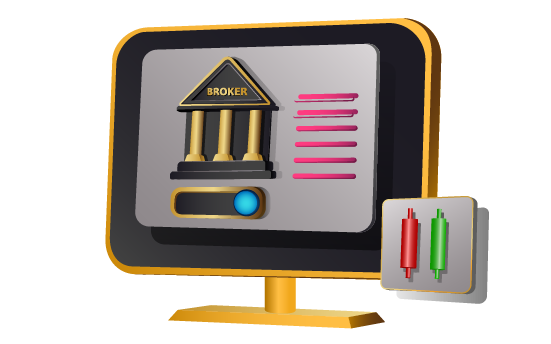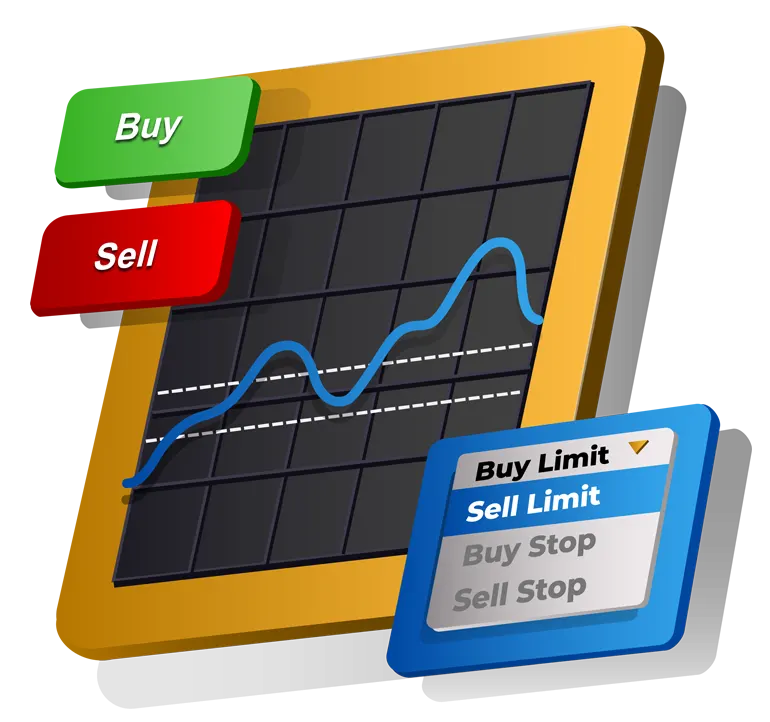In this article, you will discover the most popular Forex orders used in trading. You will gain insight into the purpose of each order and how to effectively use them in your trading.
Let's dive in.
Content
Market order
Pending orders
Stop Forex orders
Limit Forex orders
OCO orders
OTO orders
Stop Loss
Trailing stop
Take Profit
Summary
The term "order" refers to the method you use to enter or exit a trade. Different brokers provide various types of Forex orders.
However, there are a few basic orders that all brokers offer their clients. It's important to be familiar with all types of Forex orders.
You never know when you'll need a specific order!
Market order
This type of order allows you to enter a trade, whether buying or selling, at the best available price at that moment.
For instance, if you want to buy GBP/USD, you simply click the corresponding button, and the trading platform automatically executes the trade at the current market price.
By clicking the "Sell" or "Buy" button, you are essentially placing a market order.

Note that depending on market conditions, there may be some discrepancy between the price you see and the price at which the order will be executed.
For more on Forex trading, see this beginner's guide.
Forex trading: A Complete guide for beginners
A detailed guide on how to start Forex trading. If you want to build a solid foundation, the tips and steps in this guide will be very helpful.
Pending orders
These are Forex orders that will be executed in the future once a specific condition is met, typically reaching a certain market price.
The most common types of pending orders are Stop and Limit!
Both types become market orders once the specified price is reached. The key difference between them is that Stop orders can be activated at a worse price than initially set, depending on market conditions.
Limit orders, however, cannot be activated at a price worse than the set price; they must be executed at either the specified price or a more favorable one.
Different pending orders are used based on trading objectives:
- A breakout level is traded with a Stop order;
- A pullback is traded with a Limit order.
In MetaTrader, you will find the pending orders by clicking on the "New order" button. A window will then be displayed that has a drop-down menu called “Type”.
It refers to the type of order.
There are two options:
- Market execution (market order);
- Pending order.

After selecting Pending Order from the drop-down menu, you will see the following fields:
- Type (the type of pending order is already considered here);
- Volume;
- Price;
- SL & TP;
- Expiration date;
- “Place” button.

The types of Forex pending orders:
- Buy Limit;
- Sell Limit;
- Buy Stop;
- Sell Stop.
You will find out how to use them further down in the article.

In the "Price" field, enter the price at which you want to place the Forex order. You can also specify the duration for which the order remains valid.
In the next chapter, you will learn about pending orders and how to use them effectively.
Buy Stop and Sell Stop
Stop Forex orders to enter a trade are different from Stop Loss orders, which are used to limit losses!
- A Buy Stop order is used when you want to buy at a price higher than the current market price, so it is placed above the current price level;
- A Sell Stop order is used when you want to sell at a price lower than the current market price, so it is placed below the current price level.
For example, if EUR/USD is currently trading at 1.0855 and you believe it will continue to rise if it reaches 1.0895, you have two options:
- Watch the market until the price reaches 1.0895 to buy, or;
- Place a Buy Stop order at the 1.0895 level.

However, if you think that the market will continue lower if it reaches a certain level below the current price, in order not to stand in front of the computer and wait for a convenient moment to sell, you can place a Sell Stop order at a specific lower level.
In the example on the chart, the price is currently trading at 1.0855 so the Sell Stop order is placed at 1.08233.
Buy Limit and Sell Limit
- A Buy Limit order is used when you want to buy at a price lower than the current market price, so it is placed below the current price level;
- A Sell Limit order is used when you want to sell at a price higher than the current market price, so it is placed above the current price level.
For example, if EUR/USD is currently trading at 1.0855 and you believe it will bounce back down if it reaches 1.0895, you have two options:
- Watch the market until the price reaches 1.0895 to sell, or;
- Place a Sell Limit order at the 1.0895 level.

However, if you believe the price will drop before rising again, you can place a Buy Limit order at a level lower than the current market price, such as 1.0808, to avoid waiting in front of the computer for the right moment to buy.
Here is a summary of the orders and where they are placed on the chart.

Let's repeat:
- Buy Limit - pending forex order, placed at a price lower than the current one;
- Buy Stop - pending forex order, placed at a price higher than the current one;
- Sell Limit - pending forex order, placed at a price higher than the current one;
- Sell Stop - pending forex order, placed at a price lower than the current one.
You can learn how to use forex orders and specific strategies in Trendline's beginner training. Click on the button and register for free.
FREE TRADING BEGINNERS COURSE
If you want to make a real profit by trading GOLD or FOREX then our Free Beginners course is exactly for you. This is a complete guide on Forex trading consisting of 38 video lessons.
OCO / One Cancels The Other
The OCO order is a combination of two orders to enter a trade.
One forex order is placed above the current market price and the other below the current market price. When one order is triggered, the other is automatically deleted from the trading platform.
For example, EUR/USD is currently trading at 1.0895.
You expect a lot of volatility in the market and you don't want to miss the move.
In this case, you place an OCO Forex order at the level of 1.0915 (above the market price) in anticipation of an upside market move. At the same time, another Forex order is placed at the level of 1.0875 (below the market price) in case the price goes down.
When the market price reaches 1.0915, you will buy EUR/USD at this level, and the order placed at 1.0875 will be deleted from the trading platform.
OTO / One Triggers The Other
An OTO order allows the trader to place two orders simultaneously, with the second one becoming active only after the first is executed.
This type of Forex order enables various combinations. For instance, you can place a Buy Stop order at a price above the current one and, at the same time, set a second order to limit potential losses if the price moves unfavorably. In this scenario, the stop loss order is activated only if the buy order is executed.
The Forex orders discussed so far are for entering a trade, but you also need to know how to exit trades. This can be done using Stop Loss and Take Profit orders.
Stop Loss / A Forex Order That Limits Your Loss
THIS IS THE MOST IMPORTANT FOREX ORDER - MAKE SURE YOU REMEMBER IT
A Stop Loss order is used to close a position at a predetermined price to limit losses if the market moves against you.
For example, if you buy EUR/USD at 1.0895 with the expectation that it will rise, but the price moves in the opposite direction, a Stop Loss order will help limit your losses to a specific amount.
Even when placing an order to enter a trade, it's important to determine where you will set your Stop Loss to manage potential losses. If you initially forget to set a Stop Loss, you can still add it to your trade later.
Trailing Stop
A trailing stop is a type of Forex stop loss order that adjusts with the market price, essentially functioning as a dynamic Stop Loss.
Here’s how it works:
Suppose you want to buy GBP/USD at 1.2920 and set a trailing stop at 20 pips below the entry price, or at 1.2900. As the price moves in your favor and reaches 1.2940, the trailing stop will adjust to 1.2920, maintaining a 20-pip distance from the current price.
If the price rises further to 1.2960, the trailing stop will move up to 1.2940.
However, if the price then drops to 1.2950, the trailing stop will not revert to 1.2930 but will stay at 1.2940.
If the trailing stop adjusted downward with the price, it would become ineffective, as it would be unlikely to protect against losses.
Understanding concepts like Margin Call and Stop Out is crucial, which is why we provide these articles and training to help you avoid such situations.
To learn more about Forex order types, consider registering and opening a demo account to practice and test different orders.
Trade with a secure broker
Founded in 2010, ThinkMarkets is a multi-regulated broker with offices across the globe including Australia, Asia, Japan, Europe, the UK, UAE, South Africa, and clients in more than 165 countries.
Another important feature to remember is that the trailing stop is only active if the trading platform is active. If the platform is closed or you don't have an internet connection, then you don't have a Stop Loss order!
Take Profit / Forex Order That Collects Profit
A Take Profit order is used to close a position once it reaches a predetermined profit level.
For instance, if you buy USD/JPY at 108.50 and expect it to rise to 109.50 (+100 pips), you should set a Take Profit order at 109.50. When the market price hits this level, the broker will automatically close the position, locking in your profit.
Summary
These are the most commonly used orders in the Forex market and are generally sufficient for most trading needs—there’s no need to overcomplicate things.
Before starting real trading, thoroughly review your broker’s conditions regarding Forex orders. Ensure you understand how to use them correctly.
Practice is crucial, so open a demo account to familiarize yourself with the platform’s features. Experiment with placing and managing orders to get comfortable.
Additionally, remember that in the Forex market, there are two prices: BID and ASK. One is for buying and the other for selling. Different Forex orders are activated at various prices, which will be covered in more detail in upcoming articles.
Free courses

Free Forex Training for Beginners

How to choose a Forex broker?

Received funding from a Prop company
Risk Warning: All products and services offered by "Forex Trendline" Ltd are for educational purposes only and do not constitute investment advice or a trading recommendation. Trading financial instruments carries a high level of risk and may result in losses. Past performance is not a guarantee of future success. We recommend that you read the full Terms and Conditions before using our services. Nothing on this site should be interpreted as investment advice from "Forex Trendline" Ltd or any of its representatives, directors, or employees.
© 2025 Trendline. All rights reserved

